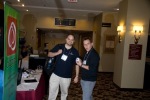HA – Clustering – Alagad Training Bootcamp
We have blogged many times around items related to clustering and high availability, as it relates to ColdFusion-JRun. In addition, I have been to several clients who broughtAlagad in because they wanted to improve application performance and where if ColdFusion Enterprise is installedthis often eventually involved clustering CF. So we have decided we are going to make all things relating to HA into a bootcamp style training offering. I worked on the theory of this coming back to LA from Webmaniacs in DC and there is no doubt in my mind that we can structure a one day class which would be based on my field work and intensely hands-on andwhich would involved the following:
- Understanding the workingsClustering in CF-Jrun
- Analyzing the effects of load testing in clusteredand non-clustered environments, the differences etc.
- Hands-on installation of ColdFusion including the creation of a master instance.
- Hands-on creation of instances and a cluster.
- Hands-on installation of SeeFusion for monitoring tests.
- Hands-on installation of aCF application and connecting to a web server with the web server configuration tool.
- Hands-on creation of a load test script which will be run both against a single instance and a cluster.
- Tuning of CF as the tests progress and analysis of logs.
As we already have a good deal of material we are looking to offer this initially around the time of CF United 2008 (June 18 – June 21st 2008). This will be a very practical and hands-on offering. More news on this soon. By the way, thank you to all those who attended my class at Webmaniacs, Mark Kruger kindly blogged about that here.




